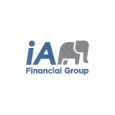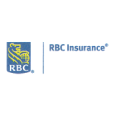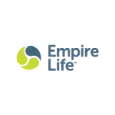Universal life policies offer the best investment flexibility
A universal life policy may answer if you want to buy term coverage and invest the rest. It consists of a life insurance component and an investment account. The buy term and invest the rest strategy are among the best policy options available and highly recommended for those who believe in buying a term life policy and investing the difference.
The policyholder decides what to do with each component. The premium and the death benefit can be increased or decreased with some limitations. The earnings on the investment account may or may not be guaranteed depending on the type of investment chosen. The policyholder controls how much money to earn every month inside the policy. Tax-deferred earnings are placed into the saving portion every month, collecting interest while increasing your net worth.
More Canadian families choose IDC Insurance
POLICY HOLDERS
INSURED BENEFITS
YEARS OF SERVICE
Why hold investments inside a universal life policy
You do not pay any income tax on the growth of the investments while it resides in the policy. This strategy is similar to an RRSP. However, unlike RRSP, there are ways to use the money on a very tax-favoured basis. This type of strategy is often referred to as the Leveraged Deferred Compensation Plan (LDCP). An LDCP is essentially building up cash in a permanent insurance policy and then using the cash for a series of tax-free loans. Our experienced advisors can help to provide illustrations for this concept. The deferral is that you wait as long as possible to let the cash grow and then start drawing it out using the policy as collateral with a lender.
You can invest 100% of the savings or investment component into indexes outside Canada. These investment options include, but are not limited to, the S&P Indexes, American and Global Equity Indexes, and Bond Indexes. Some indexes are tied directly to the performance of well-known, class-leading, significant mutual funds, with one policy offering access to indices that emulate over 400 fund managers.
The funds are creditor-proofed if the policy is set up correctly. Creditors cannot get at the funds inside this policy, which is essential for many business owners and others concerned about lawsuits. However, this protection is only available for personally owned policies, while corporate-owned policies with the corporation as the beneficiary do not enjoy this creditor protection.
If the policy is set up correctly, the entire investment account plus the face value of the insurance policy goes to the beneficiary tax-free on the death of the insured. There are not even any probate fees. The same applies to a whole life policy, but the cash value may or may not be in addition to the face value, depending on the type of whole life policy.
- Flexible Care Benefits: This rider policy provides extra funds for long-term care expenses.
- Family Coverage: Your child and spouse could receive coverage through a separate rider policy.
- Disability Waiver: If you are disabled for certain months, the cost of life insurance might be waivered.
The four components of a universal life policy
-
Mortality Cost: This is the portion of your premium covering the pure cost of insurance or your death benefit. We recommend you choose a universal life policy where your mortality cost does not increase as you get older; instead, keep the mortality cost of your policy the same or level throughout your lifetime.
-
Administration Cost – This is the cost of administering your policy plus the premium taxes, usually in the range of $100 to $125/year. Universal life policies usually guarantee that your administration charges will not change for the life of your policy.
-
Savings or Investment – Once the mortality costs and the administration charges have been deducted from your universal life premium, the remainder of your premium or the cash value is placed into an investment savings vehicle. The cash value portion of your universal life insurance premium may also be referred to as the cash surrender value or fund value.
-
Return on Savings and Investment – Any interest that your cash value earns over the life of your universal life policy is credited back to the cash value portion annually and invested. In essence, your money is compounding or earning money. Universal life policies now disclose how your interest is calculated and invested. They even provide a list of investment options (similar to mutual funds), so you have control over your investment. This return on savings portion of the universal life policy has become quite popular in the past few years. While they may not earn as high a return as mutual funds, they will grow tax-free and are creditor proof. Also, unlike an RRSP, you will have some options for using this money on a tax-favoured basis.
Universal life insurance vs. whole life insurance
Both of these types of insurance are known as permanent insurance. These policies offer significant advantages for lifetime coverage while also offering some potential growth for final expense, estate-giving and business continuity planning needs.
Universal life insurance policies were designed to provide an answer to the concept that you should “buy term insurance and invest the difference.” In addition, it provides an answer to some of the limitations about whole life insurance’s failure to disclose how the premium is allocated between the cost of insurance, administration costs, and investment portion and to provide investment options that you can choose.
In a universal life insurance policy, the mortality charges are disclosed. We recommend that they should be level. They do not increase as you get older. The administration charges are also identified and frequently guaranteed not to change for the policy’s life. They are generally in the range of $100 to $125/year.
The investment options inside a universal life policy have grown dramatically over the years. While some of the older policies did not disclose how the returns were calculated, the newer ones offer a list of investment options that have similarities to mutual funds. Some are designed to provide returns that mirror well-known mutual funds, and mutual funds managers manage them. These include S&P Index Accounts, Canadian Index Accounts, Canadian and American Equity Index Accounts, Bond Index Accounts, and 1, 5, and 10-year GIC Accounts.
Whole life insurance policies were designed to provide permanent insurance. It is the kind you plan to have when you pass on, plus a savings component in a single monthly premium. There has been a lot of this product sold over the years due to its features and popularity.
Whole life insurance has a level cost of insurance where the costs do not increase each year. What you pay in the first year is the same as in the last year, but they do not disclose the cost of insurance. They also do not disclose the administration costs. After the insurance and administration costs are covered, the balance of the premium is the savings or investment portion.
The returns on the savings or investment part are dependent upon excess interest and investment earnings, savings in mortality costs, the operating expenses and the will of the insurance company board of directors. They choose what they will pay.
To summarize, apart from a minimum guaranteed return, the policies do not disclose the cost of insurance, the administration costs, or how they calculate the returns on your savings portion. You can not choose where the money is invested, and they do not disclose the return you are receiving.
Universal life insurance ownership offers flexibility
One of the most attractive features of universal life insurance is the flexibility to choose when and how much premium to pay for as long as the payments meet the minimum amount required to keep the policy active. The option to adjust the premium payment is available once the policy has built up enough cash value and after the first regular payment has been made. It is pretty simple to learn how much this type of coverage would cost by simply completing our quote form. Once quotes have been provided, our advisors will work with you to help you to select the right policy.











